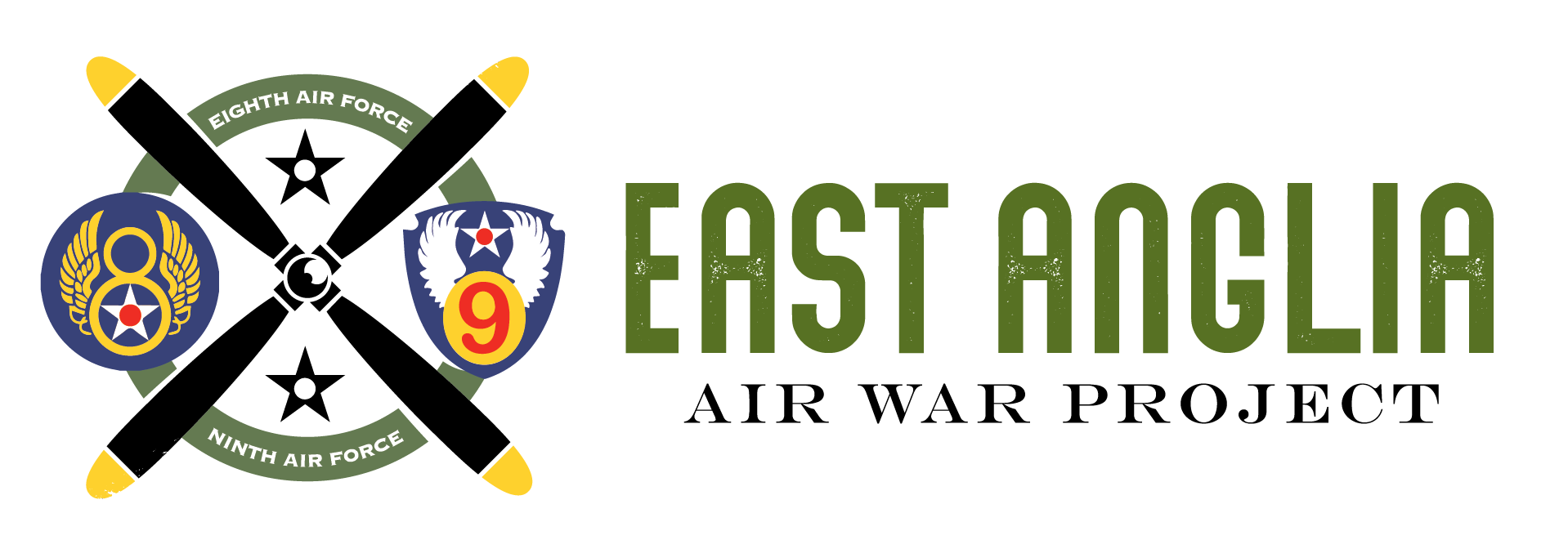
The
Project
During World War
II, the United States established air bases in East Anglia to support daylight
bombing against the Axis powers in Europe. Throughout the region, small
communities made way for the construction of large-scale airdromes. Farm land
turned into a landscape of concrete, Nissan huts, and the implements of war as
American bomber and fighter groups built significant infrastructure for
operations against Nazi-held targets deep inside Europe. The sudden appearance
of the Eighth Air Force in rural England, the rapid growth of the number of
bases over a short time frame, and the resulting daily struggle for life and
death over the skies of England and the continent forged a unique sense of
community in these British villages and towns. For the American air crews and
ground personnel and their British hosts, their common goals, together with the
daily demonstration of sacrifice by the young air crews for Mother England and
the Free World, shaped a special relationship between the embattled British
people and their distant American cousins from "over the pond."





There occurred a cross-Atlantic cultural exchange when
these tens of thousands of young American airman and their support crews
interrelated with the citizens of rural East Anglia. While too often trivialized by
references to the British complaint that the Yanks were “over paid, over
sexed, and over here,” the interview record has shown that during this
time of grave international trial, young men from America and families in
England were drawn together in a community of crisis. They shared their cultural values,
developed close personal relationships, and sometimes conflicted. From experiences positive and negative,
the lives of both Americans and the British were profoundly changed, impacting
not only the generation that experienced the war, but other generations that
followed as well.
Recent trends in the literature of military history
have revealed that historians have broadened their approach to the study of
military manoeuvre and contest to include much more than the operational
realities of conflict. The New
Military History, as it has come to be called, has added social history to the
mix, providing a more diverse portrait of the human experience in war. New tools and sources add to the
resources applied to the story of war and the men and women who were the actors
in that drama. Oral history is one
such tool that can bring diverse threads to the historical canvas: music, culture, language, food,
religion, and a host of other elements that can play a role in the unfolding
story. These stories of community,
once considered new elements in the military narrative, have become a
traditional component of the literary deposition laid down as the historical
record. More than mere facts and
figures of manoeuvre, tactics, or grand strategy, oral history often tells us more about the world in which the military drama
played out. As historians
considered the social history in the military arena, oral history as a tool has
grown in importance and frequency of use.
Across the university landscape, oral history programs and centers have
sprung up to support the new scholarship.
Over the last quarter century technological advances have paved the way
for oral history to grow as a sub-discipline and to develop as one tool among
many for the historian.
More recent and dramatic developments in digital technology have created
other tools that perhaps need to be added to the military history arsenal. The East Anglia Air War Project (EAAWP),
based at Abilene Christian University, Abilene, Texas, has expanded its study
of Allied air operations and World War II England to include a full array of
technology tools.





In 2002, the EAAWP was established with the goal to
preserve the memory and history of community in wartime England, in particular
the community established between the American airman who came in large numbers
beginning in 1942 and the British families who lived in rural England near and
around the American bomber and fighter bases. The project focuses on the
agricultural areas north and northwest of London where large numbers of
American air bases were established among the farming villages and towns that
stretch from Norwich on the east to Kettering to the west of Cambridge. The target interview audience has been
American aircrews and ground personnel stationed in the Eighth Air Force and
British family members who were children or young adults during World War
II. Since 2014 the Ninth Air Force
bases and areas have been added to the study. The underlying oral history methodology
continues to rely heavily on an archival research design and a literature
review of a growing historiography of secondary works, memoirs, and regimental
histories.




Historical archaeology proved to be an essential tool in developing historical data relating to life on the American air bases in East Anglia and in the surrounding villages. Today the historic sites are deteriorating, but much of the physical environment remaining offers clues to the history that played out there during World War II. Archaeological site surveys produced maps and photograph collections that revealed patterns of site use, structural relationships, and living styles that adds to wartime memory. The archaeological survey supported a varied investigation of the physical environment that addressed these four specific objectives:
1. Collect data that will establish a sense of place and demonstrate
how the built environment figured into community
2. Examine and record structural relationships,
construction descriptions, and building use.
3. Determine the level of decay and residual evidence
remaining that confirms archival and interview evidence.
4. Create databases,
still photography, and videography collections relating to the historic site.
These collections will support the oral history interviews associated
with the events at that World War II venue.
Ocassional Newsletters and News on the Work of the Old Primero Historical Foundation
In 2013 the East Anglia Air War Project published a newsletter to provide supporters and those who are interested in the work of the Project an update on progress for the first decade of work.
In 2017 a second report appeared to reveal plans for the new Old Primero Historical Foundation and its support of the history of the air war in World War II.
Click on the links below for a pdf copy of the two documents.
- 2017-2018 Newsletter
- 2013 Newsletter
- Bledsoe Award Newsletter 4, November 5, 2020
- Bledsoe Award Newsletter 3, May 18, 2020
- Bledsoe Award Newsletter 2, December 21, 2019
- Bledsoe Award Newsletter 1, September 25, 2017
A
Sample Site Survey
It will be worth a few moments to examine a sample site
survey to see how the methodology assisted the oral historian with outcomes
from such collateral work. The 381st
Bombardment Group was one of many such heavy bomber units arriving in the East
Anglia area in England after 1941.
The 381st’s base at Ridgewell, not far from Cambridge,
was one of many such airdromes constructed in rural England during the
war. In almost every case, these
bases were placed among pastoral villages where more than 3,500 Americans
arrived to live among the small rural population. Constructed in a hurry and suffering
from wartime shortages of building materials and labor, these bases became home
for a bomb group for the duration of the war. Ridgewell and the 381st Bomb
Group became an early priority for EAAWP’s oral history interviews and
its collateral field operations in England.


Control Tower,
Wartime Ridgewell
Night work at Ridgewell during the war
Since 2001 more than fifty oral interviews of 381st
Bomb Group air and ground crews have been produced. In conjunction with the interview
program, in summer 2002 the EAAWP conducted a historical site survey at
Ridgewell using a team of eighteen university students and two historians. Using site maps of wartime
Ridgewell, the team (see images below) produced a collection of materials that
documented the following historical realities and opportunities for additional
study:
1. The survival status of structures from wartime
Ridgewell to the present day.
2. Produced a survey of major elements at Site 3 and Site
11, representing the largest remaining groups of buildings of any of the
wartime sites at Ridgewell.
3. Documented patterns of construction that provided
essential data on the patterns of living and site use by individuals and by
groups.
4. Identified a disposal area where both military
artifacts and personal refuse were found.
No previous disturbances are evident so this site holds great promise
for a future excavation.


Site Survey Underway at Site 3 and Site 11
at Ridgewell, England 2002
The resulting data collection relating to the physical
place at Ridgewell added essential evidence to the oral history
collection. Further, the potential
for future excavations at the newly-identified refuse dump at Ridgewell
promised to yield a significant collection of artifacts, many of which relate
to the living conditions for the Americans at Ridgewell. Figure 2 contains a sampling of surface
artifacts collected at the proposed excavation site. Notice that the pictured artifacts
include not only aircrafts parts, but also personal items such as a toothbrush
and a shaving cream tube, all discarded at Ridgewell before 1945. These samples and the presense of a large scatter field on the site’s
surface, suggests that a future excavation would yield a significant collection
of physical evidence about life at Ridgewell during the war.

Surface Artifact Samples at Ridgewell
Dump Site (courtesy Graham Thussell)
While archaeological operations at the related
historic sites produce valuable data for the interview collection, steps are
taken during the interview session to add to the collateral collection as
well. During the years since the
site survey, a large number of 381st Bomb Group interviews have been
added to the oral history collection.
1st Air Division Surgeon Thurman Shuller's Wartime Diary is Nearing Completion
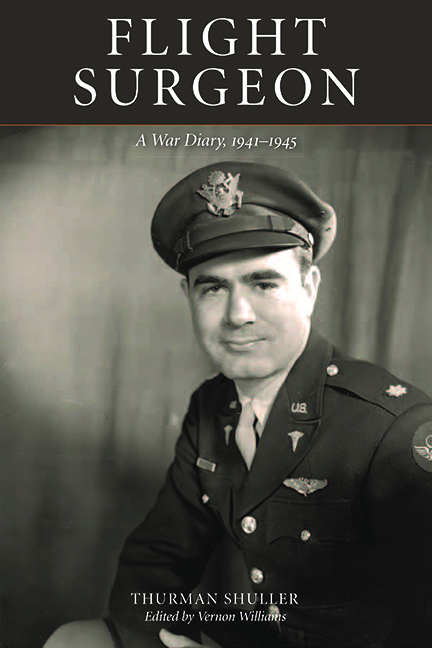
Colonel Thurman Shuller graduated from medical school in 1939, and after a two-year internship at Charity Hospital in New Orleans, he entered the Army with a commission as First Lieutenant in the Medical Corps. Shuller's World War II diary begins two months after his arrival at Las Vegas Field to assume his position as a doctor in the newly constructed hospital at the Gunnery School. Shuller's diary entries reveal the routine of army life that he faced, and his attitudes and concerns during his maturation and evolution as an Army combat surgeon during training and later in the combat theater of operations from his base at Thurleigh in Bedfordshire, England, first with the 306th Bomb Group and later, as Division Surgeon for the 1st Air Division at Brampton Grange in Huntingdonshire. The war diary covers six books that he wrote during the war that I, as editor, have organized into a book of seven chapters. The volume will be published by Texas Christian University Press in June 2021 and will be organized in this fashion:
Chapter 1.
Prologue to War, September 5, 1941-July 31, 1942
Chapter 2.
A Doctor Goes to War, August 1, 1942-May 12, 1943
Chapter 3.
A Doctor at War, May 13, 1943-March 9, 1944
Chapter 4.
A Doctor in the ETO, March 10, 1944-December 30, 1944
Chapter 5.
Hostilities Cease, January 1, 1945-October 20, 1945
Chapter 6. A
Farewell to England, October 21, 1945-December 9, 1945
Chapter 7. Epilogue
Writing the First Book on the East Anglia Air War Project is Underway
After over
almost a decade and a half of research and interviewing, I am writing the first
volume to draw on the historical materials developed by the East Anglia Air War
Project. The volume is tentatively
titled: Crucible
of War: The Anglo/American Exchange in World War II England, 1942-1945. This book will explore the World II
experiences of American ground and air crews in wartime England, and the
British rural families who lived in the villages and towns in and around the
Americans. The project will examine
the sense of community that held them together from 1942 to 1945. The volume
will be the first such study to incorporate an extensive new oral history
interview collection relating to the joint Anglo/American communities that
stretched across East Anglia and west into the Midlands in rural England. I have conducted a series of
archaeological site surveys of base sites, in context with neighboring villages
and towns that will answer questions about the built environment, the sense of
place and the living patterns that existed during the wartime years. Together, with newly found manuscripts and other collateral materials
that accompany the oral history collection, the volume will provide new
insights on the social history of the war in England before 1945.
Crucible of War will be organized into seven chapters:
Chapter 1.
Setting the Stage
Chapter 2.
Little America
Chapter 3.
Race: The Shifting Landscape
Chapter 4. The
Moral Dilemma
Chapter 5.
Glamour and Hollywood
Chapter 6. A
Sense of Place
Chapter 7. War
Brides
Chapter 8. Bonds
that are Never Broken
Chapter 9.
Epilogue
1.
Setting the Stage–this chapter will introduce the war in England beginning in
September 1939 and explore early American involvement in strategic planning,
preparations for the air war and later military operations against Germany, and
the emerging construction strategy that will grow into a massive American
presence in rural England.
2.
Little America—will
examine the built environment that developed in East Anglia and west across the
Midlands. Emphasis will be made on
the sense of community that developed between the British and Americans in the
villages and towns and on the architectural footprint that changed village life
in much of the rural areas north of London.
3.
Race: The Shifting Landscape—this chapter will explore the introduction of
large numbers of African-American troops into the largely all-white British
rural community, the cross-cultural interchange, the arrival of large numbers
of all-white American military units, and the resulting racial conflict that
developed across England.
4.
The Moral Dilemma—with the arrival of large numbers of American military personnel
throughout England, problems developed that strained the social framework in British
society. Promiscuity, sexually
transmitted diseases, unwed mothers, threats to the institution of marriage,
and the confusion to standards of morality—all contributed to a growing
sense of crisis in a society suffering from threats from many fronts.
5.
Glamour and Hollywood—During World War II a new American-style of
music made its appearance in England, dominating the Anglo-American cultural
exchange that reached dramatic proportions after 1942. American big band music, coupled with the
jitterbug dance craze, swept the British Isles by storm during the war
years. Glenn Miller’s arrival
in England with his new Army Air Corps Band in 1944 triggered a new blitz for
the British—this one much more pleasant than the German one. Reaching out into the rural heartland,
Miller’s band played over eight hundred concerts, recorded at Abbey Road
Studios, and aired live concerts on the BBC from the Corn Exchange in
Bedford. The resulting invasion of
the new band music and dance craze signaled a new optimism in wartime Britain,
lifted up morale for both the Americans and the British across war-weary
England and provided a platform for a growing cross-cultural exchange as the
American presence grew to a staggering level in the last years of the war. The wartime musical trends lasted well
into the 1950s when a new revolutionary musical style exploded upon the
scene—rock n’ roll.
6.
A Sense of Place—for many Americans East Anglia and the villages and towns across
rural England became a refuge from the stress and terror that was the air war
against Germany. Air crews who flew
missions against dangerous targets and survived the battle in the skies across
occupied Europe, returned to their base and the villages nearby. These villages and the British families
who lived there provided a sense of normalcy that staved off the war
temporarily and allowed the Americans recovery time before the next
mission. As the war wore on, a
sense of home developed in the comfortable cottages around the base, the pubs,
passes to London, weekly dances, church fetes, and in other routines that
mediated that rigors of war. This
chapter will examine the American and British experience and how the war
established a sense of place in the villages and towns across England.
7.
War Brides—for
many British families the arrival of the Americans in England signaled more
than a momentary cultural exchange, it produced dramatic change, upheaval,
struggle, loss and for many a victory of sorts. My interest in the war brides part of
the story produced a series of oral interviews that disclosed much more than
the tale of the young British wives and their new lives in the United
States. These narratives revealed
much about the lives of British families, the impact of the European war on
family life, and the cultural collision that took place as an American soldier
entered the family structure and threatened the status quo. Marriage to an American meant a goodbye
and separation that for many proved permanent and forever. This chapter will examine these social
realities and the cultural exchange that they produced.
8.
Bonds that are Never Broken—this chapter will investigate the relationships
developed during the war and how those relationships have fared over the years
since 1945. Has the sense of
community in wartime England survived?
Is there a significant bond between the people of England and the
Americans that is based on the wartime experience? How does succeeding generations of
British family members view the Americans and the wartime experience? How was the war brought home to the
British villagers? How does memory
add to the historical record in British minds?
9.
Epilogue
The manuscript will be
finished and submitted to the publisher in Summer/Fall 2021. Updates on the progress of the publication of Crucible of War will be posted here.
University Field Team to England in June
2016

On June 1, 2016 a
team of student historians led by Dr. Vernon L. Williams arrived in England
to work on World War II history in Essex and Suffolk areas north of
London. The team was based at the
Ministry of Defence Police facilities at Wethersfield
(just north of Braintree), the former World War II site where the 416th
Bomb Group flew missions against occupied Germany during the war. The team worked on historical projects
that will included oral history interviews, documentary film presentations, museum
exhibits, archaeological survey work, presenting history programs for the
public, and producing a digitalization project for historical materials for the
communities and local history committees.
The four images
below picture Wethersfield during wartime. The images
below depict the university student team and Dr. Williams in various towns in County Essex presenting programs on World War II England. These images below are documentary photographs of wartime buildings at the 416th Bomb Group base at Wethersfield as
they appeared in 2016, 71 years after the close of World War II. The Field School team visited the Cambridge American Cemetery to create a series of documentary photographs of the graves and structures built to
honor those who were buried here during World War II. The following
selected exhibit panels were produced are part of a 30-panel exhibition gifted
to Shalford village in 2008. They
contain a few images from the wartime history of Shalford. Dr. Vernon L.
Williams is a military and naval historian. He received his doctorate from
Texas A&M University in 1985. He is currently serving as President of the Old Primero Historical Foundation
and Director of the East Anglia Air War Project. Before 2018 he spent thirty years as professor of
history in the Department of History at Abilene Christian University. Since
2001 Dr. Williams has been working to document the wartime experiences of American
and British citizens alike. Planned outcomes from this project include several
books over the next few years and a number of documentary films. Currently Dr. Williams is writing a volume on
the sense of community that developed between the Americans and British
families living in villages around the American bases. The working title for
the book is: Crucible of War: The
Anglo/American Exchange in World War II England, 1942-1945. Williams' first documentary film, Deopham Green, appeared in 2004 and since that time, he
has produced and directed eighteen documentaries on various subjects. You can visit oldsegundo.com to find information on the
films that are currently available and learn about others that are now in the production and pre-production stages. For over a decade Dr. Williams'
university students have also produced a series of short documentary films on
wartime England that are gifted to British schools and museums for use in
teaching current generations of British students about World War II in England.
For more about Dr. Williams and his background, check the appropriate links
below: 






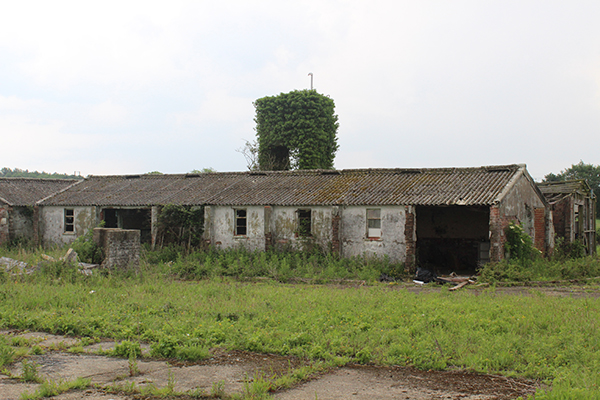
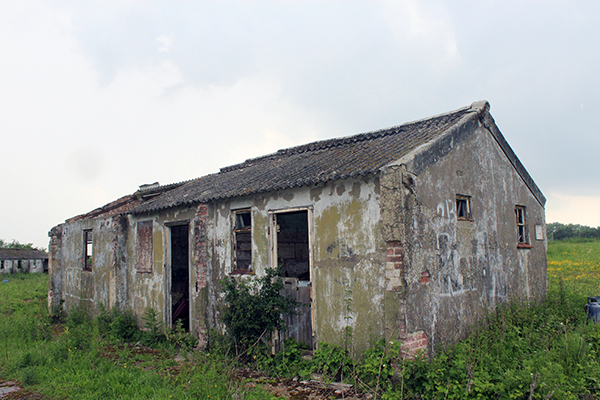
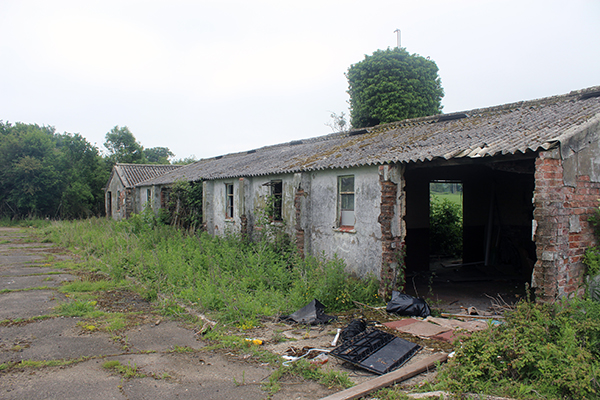
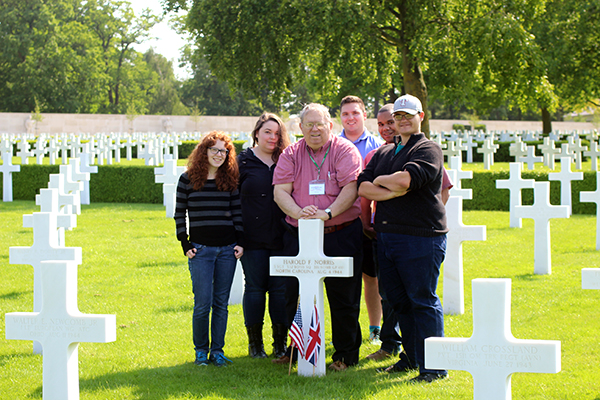
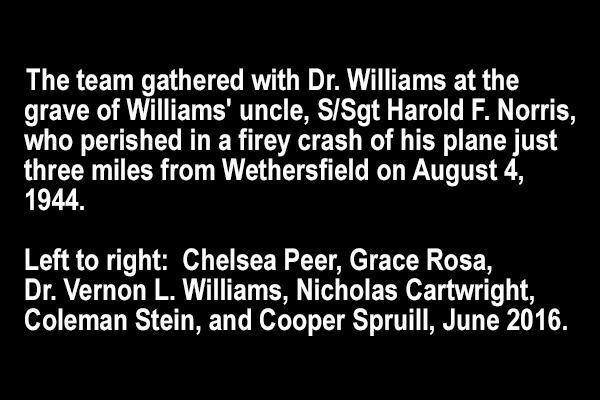









About
the Historian

Link to Old Segundo Productions for purchase of documentary films or view details about forthcoming films on American history topics . All proceeds benefit the East Anglia Air War Project.